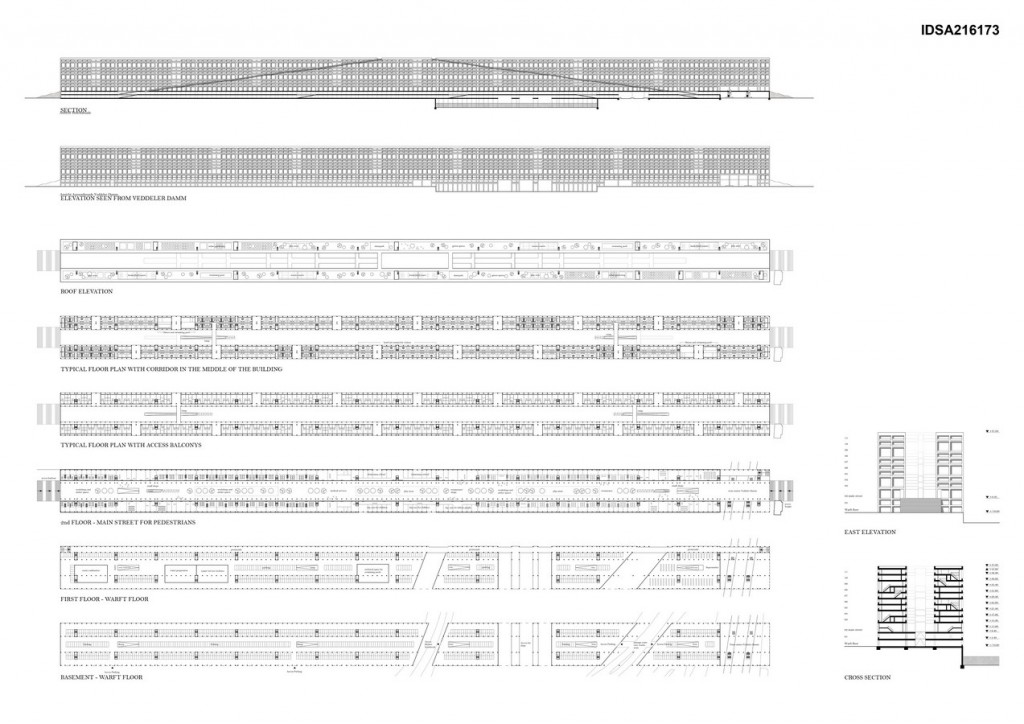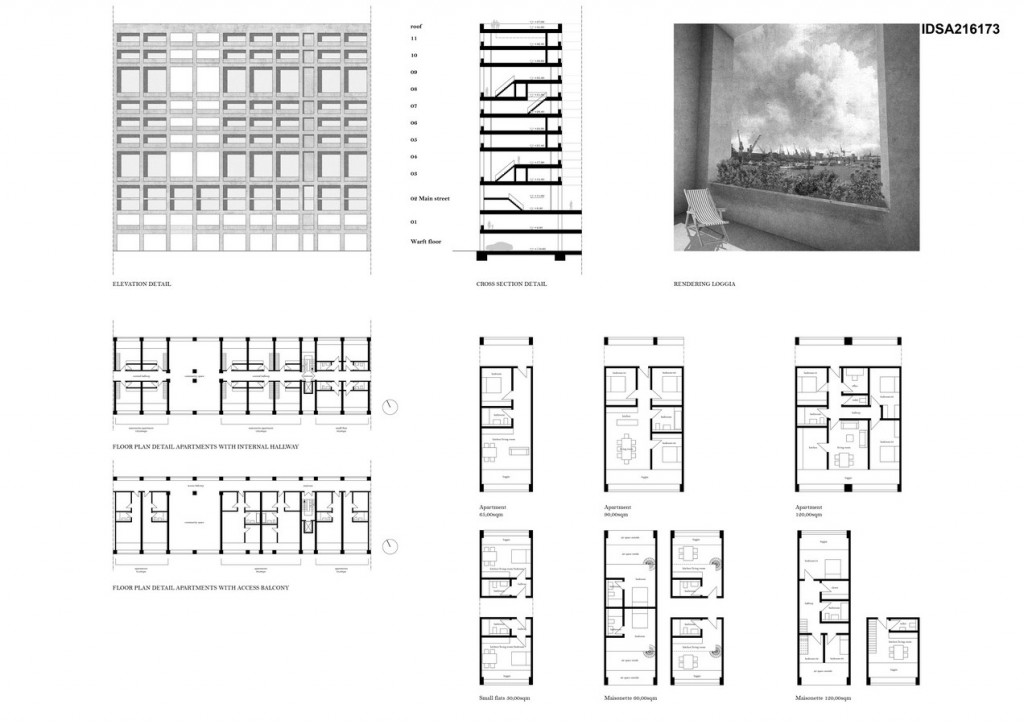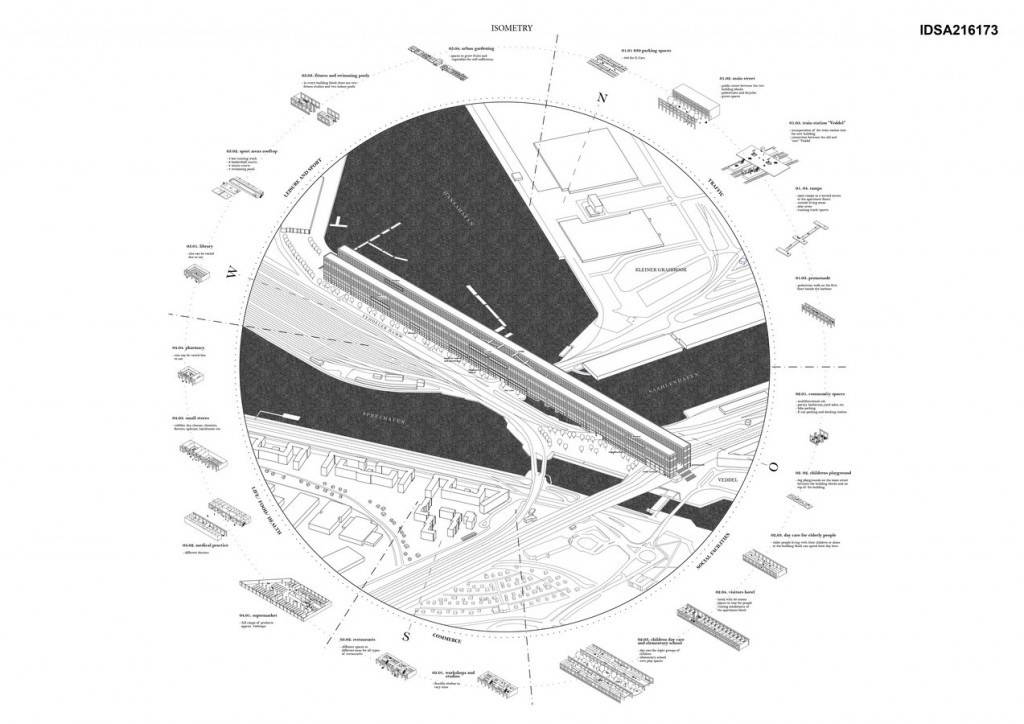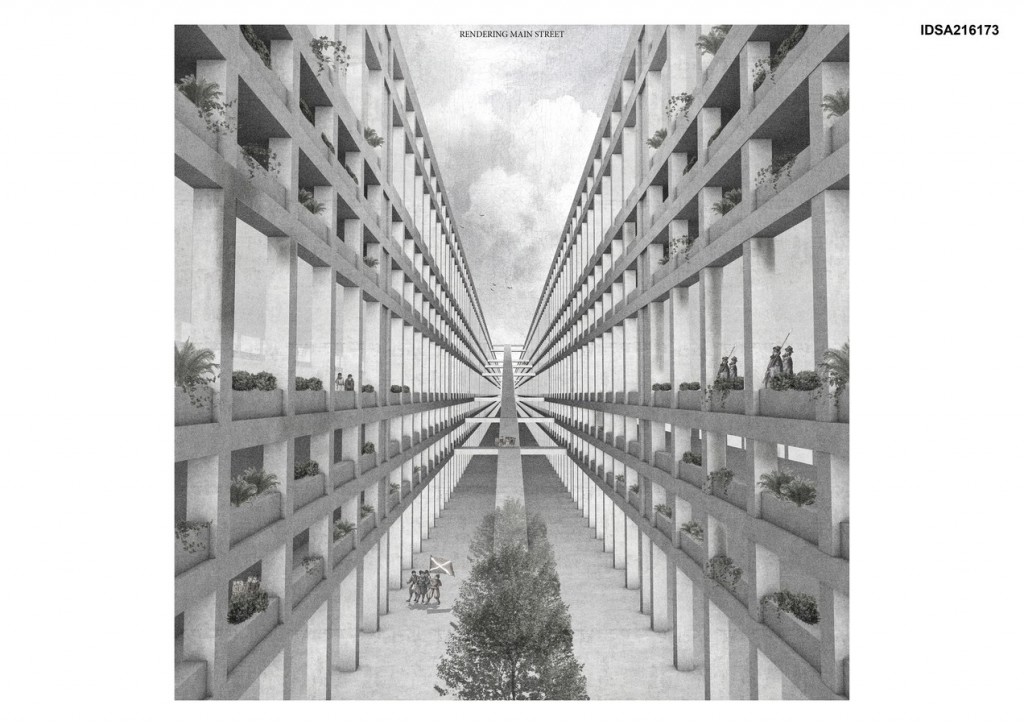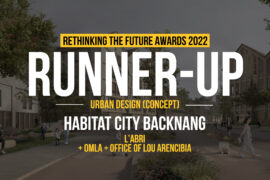The place and outer impacts form the architecture of Hamburg 2124. The narrow and remote plot without a distinct access for pedestrians, enormous noise pollution resulting from trucks and cars using the Veddeler Damm, a north-south orientation and the danger of flooding are formative parameters shaping the architecture
Participant Name: Nina Krass
University: Hochschule Düsseldorf – Peter Behrens School of Arts
Country: Germany
Veddel as a nearly isolated neighbourhood on a small island between Hamburgs city centre, the industrial harbour and the upcoming district Wilhelmsburg has to be connected with the new structure to form a living neighbourhood with supply and leisure accomodations. The architecture as a large-scale structure works as a connecting element between the existing quarter and the cultural spaces in the rear part of the industrial harbour and mark Veddel as a real living place.
Positioned on a two-storey socket which is used for parking, supermarket and technical spaces there are two parallel apartment blocks. The internal street between the two blocks can be used either by inhabitants or visitors as access to the building, the shops or the harbour behind it. The train station is implemeted into the building. The whole building is oriented to the main street and shields the common spaces from pollution and noise.
The inner main street with it´s ramp construction which makes all apartment floors accessible leads to the rooftops. They form a second community space for the whole neighbourhood with leisure, sport and gardening areas. Private and public spaces which today are rather connected to situations than rooms are cross-linked here.
The historic type of bigger apartment houses with multiple generations living under the same roof and workshops in the rear parts is the role model for the architectural structure. The housing units with six different types of apartments with different allotments are private spaces for the inhabitants of the complex. On every floor there are nine community spaces which can be used by the inhabitants for collective activitys and events or as play spaces for children.
The willingness to social relationships and neighbourly behaviour is presumed. Most of the apartments are property, only a smaller part are rentals. With buying not only an apartment but parts of the access and community areas the inhabitants shall care about the whole building complex. The large scale structure prevents a gentrification of the neighbourhood and affects a diversity in it´s inhabitants.


